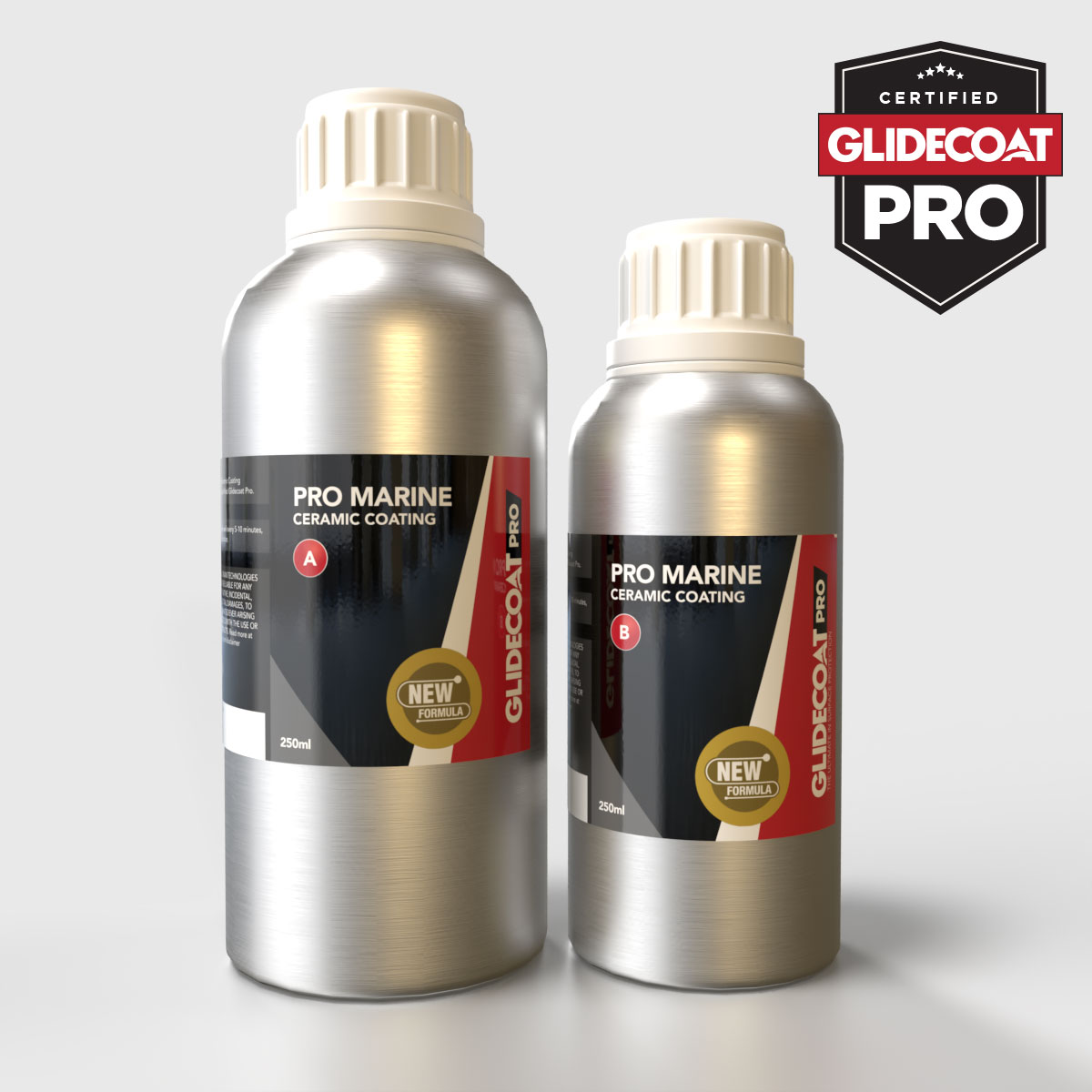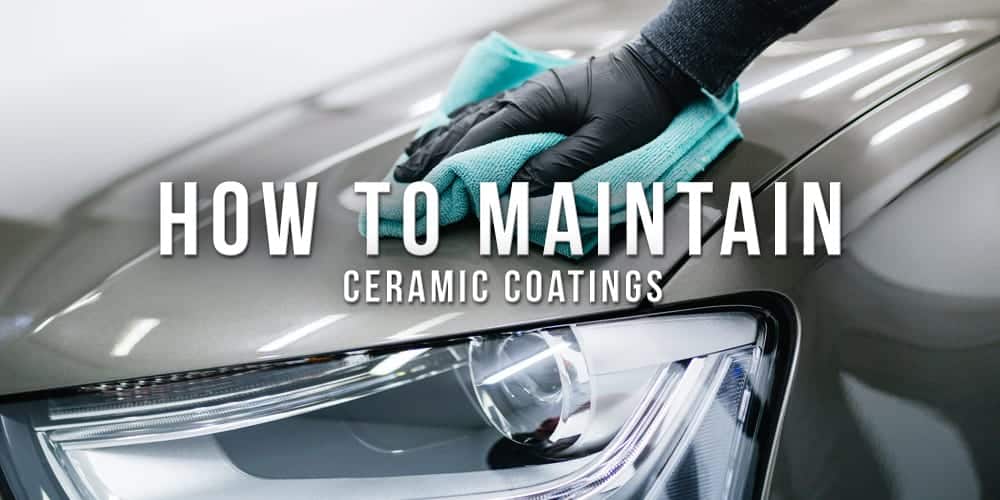The Top Benefits of Choosing Final Touch Auto Works Ceramic Coatings for Your Fleet
The Top Benefits of Choosing Final Touch Auto Works Ceramic Coatings for Your Fleet
Blog Article
The Ultimate Guide to Ceramic Coatings: Enhancing Your Cars and truck's End up and Resilience
Ceramic coverings may be the option you have actually been browsing for if you're looking to raise your car's look and defense. These advanced layers bond with your automobile's paint, creating a sturdy barrier versus ecological damages. Exactly how do they pile up against conventional wax? Understanding the benefits and application process can make a considerable distinction in your cars and truck care regimen. Let's discover what makes ceramic coatings a rewarding financial investment for your vehicle.
What Are Ceramic Coatings?
Ceramic coverings are sophisticated safety layers that enhance your automobile's outside. They're made from a liquid polymer that chemically bonds with your lorry's paint, producing a durable shield. Unlike standard wax or sealers, which diminish in time, ceramic finishings supply durable security versus environmental pollutants like UV rays, dirt, and chemicals.When you use a ceramic coating, you're buying a barrier that pushes back water, making it simpler to clean your cars and truck and keeping it looking newer for longer. This modern technology helps preserve the integrity of your paint, decreasing the risk of scratches and oxidation.Ceramic finishes been available in various formulas, each designed to satisfy different requirements and choices. You can select a DIY kit or choose for specialist application, depending on your comfort level and budget. Generally, ceramic coverings stand for a cutting-edge option for preserving your automobile's visual appeal and durability.
Advantages of Ceramic Coatings
You expose an array of advantages that go past mere aesthetic appeals when you spend in a ceramic covering. To start with, it provides extraordinary protection versus environmental contaminants like dust, bird droppings, and UV rays, keeping your cars and truck's paint looking new much longer. You'll see that maintenance becomes much easier, as the hydrophobic properties trigger water and gunk to glide off easily. This implies much less time spent cleaning and describing your vehicle.Additionally, ceramic finishings can improve the glossiness of your auto's coating, offering it that showroom luster. They likewise offer resistance to scrapes and swirl marks, which helps keep your vehicle's resale value. With a ceramic finishing, you're not simply safeguarding your investment; you're additionally enhancing its general appearance and long life. Ultimately, this innovative innovation assurances your vehicle sticks out while appreciating long-term benefits that typical waxes simply can not match.
The Application Process: How to Use Ceramic Coatings
Using a ceramic covering includes a number of key steps to ensure optimal outcomes. First, completely clean your auto to get rid of any dust, gunk, or pollutants. This assures the surface area is ready and tidy for the finish. Next, sanitize the paint utilizing a clay bar to remove embedded bits. Later, inspect the paint for flaws and brighten it to accomplish a smooth surface.Once your cars and truck's surface is prepped, apply the ceramic finish in tiny sections. Use an applicator pad to spread the finishing evenly, adhering to the maker's instructions. Enable the covering to cure for the advised time, normally in between one to 2 hours, depending upon the product.Finally, stay clear of cleaning your car for at the very least a week to allow the layer bond properly. Adhering to these actions will help you achieve a sturdy, high-gloss surface that shields your cars and truck for many years ahead.

Contrasting Ceramic Coatings to Conventional Wax
After ensuring your car's surface area is flawlessly prepped with a ceramic coating, it's time to consider just how this modern-day option stacks up versus traditional wax. Ceramic layers supply a durable layer of defense that lasts for many years, while wax normally offers only a few weeks of luster. You'll discover that ceramic coverings bond with your paint, developing redirected here a hydrophobic surface area that drives away water and dust, making maintenance easier.In contrast, conventional wax sits on top of the paint and calls for constant reapplication. With ceramic layers, you get superior scrape resistance and UV protection, assisting to avoid fading and oxidation. While the initial financial investment for a ceramic finishing is greater, the long-lasting advantages frequently surpass the prices. So, if you're looking for sturdiness and improved gloss, ceramic finishes are a smart selection over conventional wax.
Maintenance Tips for Your Ceramic Covered Automobile
To maintain your ceramic-coated lorry looking beautiful, normal maintenance is crucial. Start with a mild laundry utilizing a pH-balanced hair shampoo; prevent extreme cleaning agents that can break down the coating. Utilize a microfiber wash glove to prevent scrapes and constantly rinse extensively to remove any type of soap residue.After cleaning, dry your vehicle with a soft microfiber towel to stay clear of water areas. Take into consideration using a ceramic maintenance spray every few months to improve the covering's hydrophobic residential or commercial properties and add an extra layer of protection.It's also important to stay clear of automated automobile cleans with rough brushes, as they can harm the layer. Rather, decide for hand washes or touchless laundry options. Additionally, regularly examine your lorry for contaminants like tree sap or bird droppings and resolve them promptly to stop etching. Following these tips will certainly aid keep the sparkle and resilience of your ceramic-coated lorry for many years to come.
Common Myths Concerning Ceramic Coatings
Regardless of the excellent benefits of ceramic finishes, several misconceptions can produce complication for car owners. One common misunderstanding is that ceramic layers eliminate the need for maintenance. While they do supply boosted defense, normal washing and care are still necessary to maintain that high-gloss finish.Another misconception is that these finishings are scratch-proof. While they give a strong layer of defense against minor scrapes, they can't withstand severe influences or abrasive materials.Many additionally think that ceramic layers will make their cars immune to all pollutants. Actually, they repel dust and water yet will not protect against issues like bird droppings or tree sap from creating damage if left unattended.Lastly, some believe that using ceramic finishes is a DIY task anyone can handle, but accomplishing a remarkable application usually calls for professional knowledge to assure peak outcomes.
Choosing the Right Ceramic Layer for Your Automobile
How do you choose the ideal ceramic layer for your auto? Begin by considering the degree of security you require. If your automobile encounters rough weather or regular trip, go with a high-end coating that provides superior longevity and resistance to scratches, UV rays, and chemical stains.Next, think of the application approach. Some layers need professional installment, while others are DIY-friendly. If you're experienced, a do it yourself product might save you cash, however, for the finest outcomes, a professional can guarantee correct application.Don' t neglect straight from the source to examine the long life of the finishing. Some last a couple of years, while others can secure for a years or even more. Read testimonies and evaluations to determine individual satisfaction. By evaluating these elements, you'll discover a ceramic finishing that not just enhances your auto's appearance however also offers lasting security.
Regularly Asked Concerns
The Length Of Time Do Ceramic Coatings Last generally?
Ceramic finishings generally last anywhere from two to 5 years, depending on factors like application, upkeep, and ecological problems. You'll want to follow correct care regimens to optimize their durability and effectiveness.
Can Porcelain Coatings Be Applied Over Paint Scratches?
You can not apply ceramic finishes over paint scratches properly. It's ideal to fix any type of scratches first, making sure a smooth surface - Final Touch Auto Works Ceramic Coatings. In this manner, the layer bonds effectively and gives excellent security for your lorry's finish
Are Ceramic Coatings Safe for All Car Surface areas?
Ceramic finishes are normally secure for most car surface areas, including paint, glass, and wheels. However, it is crucial to inspect certain item standards, as some layers may not appropriate for sure products or finishes.

Will Porcelain Coatings Protect Against UV Damage?

Can I Do Touch-Ups on Ceramic Layered Surface Areas?
You can do touch-ups on ceramic layered surface areas, however it's essential to make use of compatible items. Validate the location is clean and follow proper application methods to maintain the finishing's honesty and efficiency. Unlike traditional wax or sealants, which wear off over time, ceramic finishings offer resilient protection against environmental pollutants like UV rays, dust, and chemicals.When you use a ceramic covering, you're investing in an obstacle that pushes back water, making it simpler to clean your cars and truck and keeping it looking newer for longer (Final Touch Auto Works Ceramic Coatings). Afterward, inspect the paint for blemishes and polish it to attain a smooth surface.Once your auto's surface area is prepped, use the ceramic covering in little sections. Enable the covering to treat for the recommended time, normally between one to 2 hours, depending on the product.Finally, prevent cleaning your car for at least a week to let the finishing bond correctly. Consider applying a ceramic maintenance spray every couple of months to improve the layer's hydrophobic buildings and add an additional layer of protection.It's he has a good point also sensible to avoid automated vehicle washes with rough brushes, as they can harm the covering. Ceramic finishings are generally secure for most car surface areas, including paint, glass, and wheels
Report this page